How To Open My Documents On Windows 10
Lesson 3: Working with Files
/en/windowsbasics/navigating-windows/content/
Working with files
Understanding how to work with files and folders is an important part of using your computer. Once you understand how files and binder work, yous'll use them all the fourth dimension. In this lesson, we'll show you lot the absolute nuts of working with files, including how to open files, movement your files into folders, and delete files.
Spotter the video below to learn more about using files and folders in Windows.
What is a file?
There are many different types of files you can utilise. For case, Microsoft Word documents, digital photos, digital music, and digital videos are all types of files. Y'all might even think of a file equally a digital version of a real-world thing you can interact with on your estimator. When you apply dissimilar applications, you'll often exist viewing, creating, or editing files.
Files are ordinarily represented by an icon. In the image below, y'all can see a few different types of files beneath the Recycle Bin on the desktop.
![]()
What is a folder?
Windows uses folders to help you organize files. You can put files inside a folder, only like you would put documents within a real folder. In the image below, you can see some folders on the desktop.
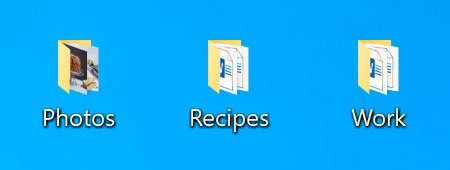
File Explorer
You tin view and organize files and folders using a built-in application known every bit File Explorer (called Windows Explorer in Windows 7 and earlier versions).
To open File Explorer, click the File Explorer icon on the taskbar, or double-click whatever folder on your desktop. A new File Explorer window will announced. Now you're gear up to first working with your files and folders.
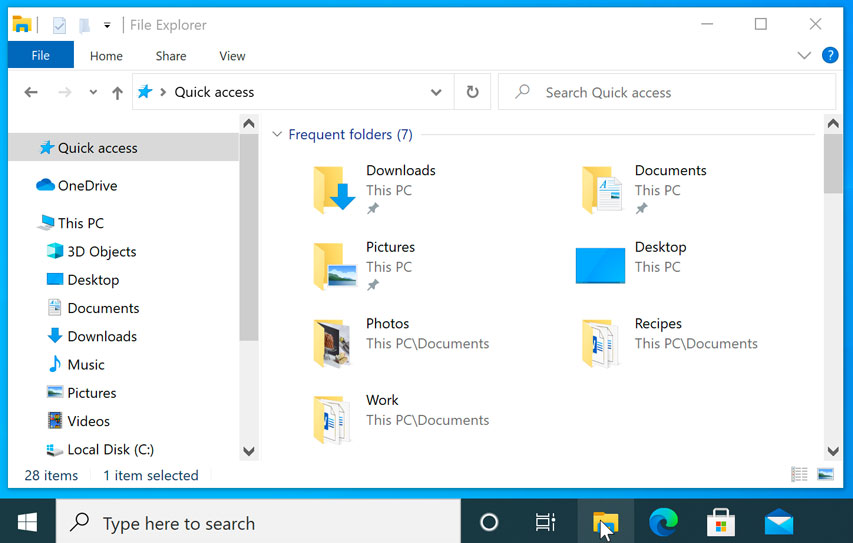
From File Explorer, double-click a folder to open it. You tin then meet all of the files stored in that binder.
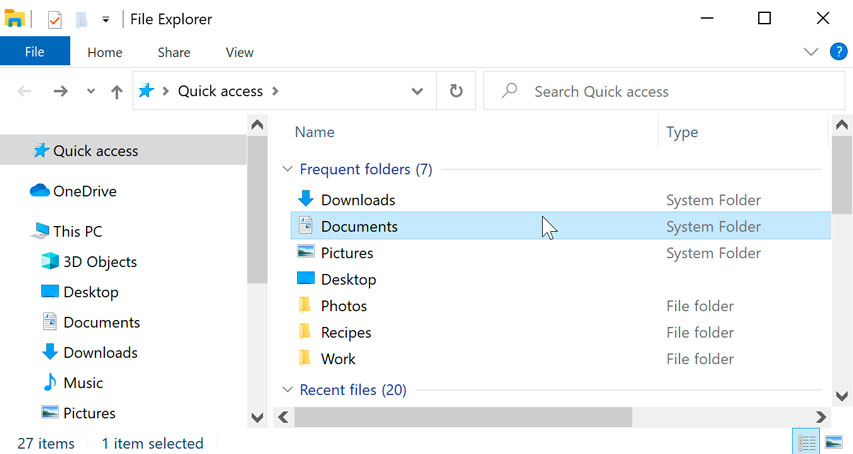
Notice that you tin as well meet the location of a folder in the address bar nearly the top of the window.
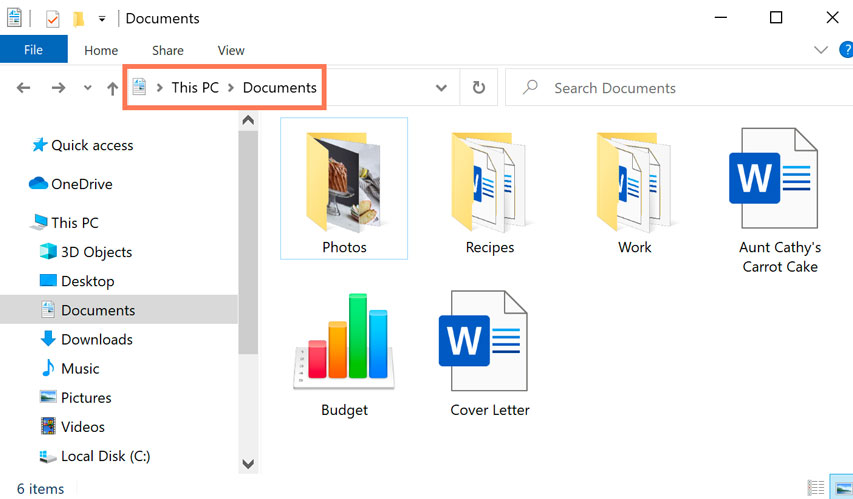
To open a file:
There are ii main means to open a file:
- Find the file on your estimator and double-click it. This volition open the file in its default application. In our instance, we'll open a Microsoft Word document (Cover Letter.docx), which volition open up in Microsoft Discussion.
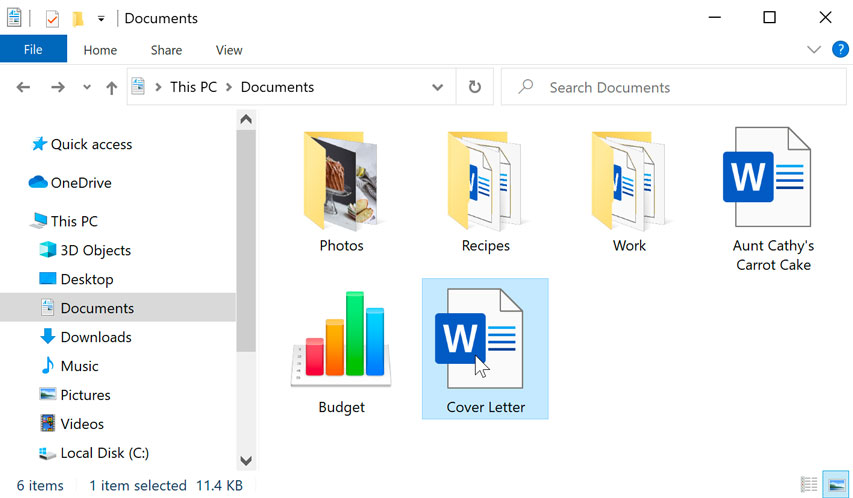
- Open the application, so utilise the application to open the file. Once the application is open, you tin get to the File bill of fare at the acme of the window and select Open.
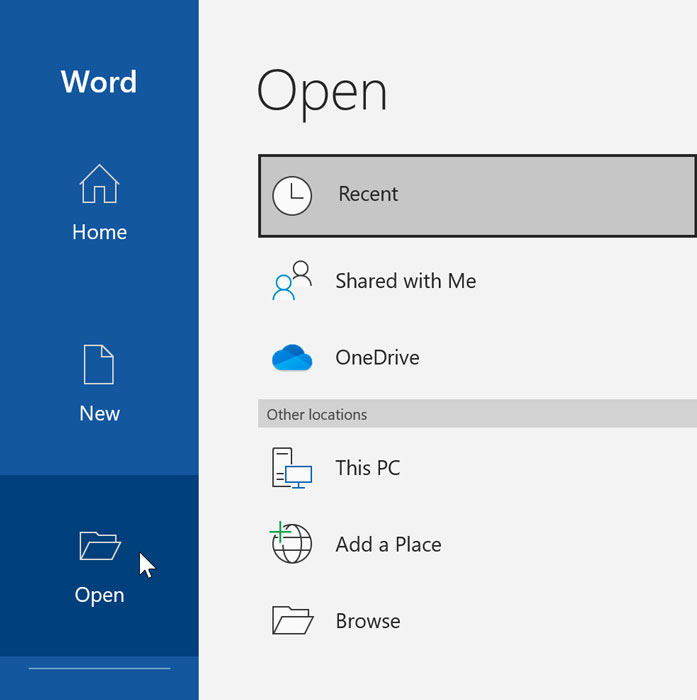
Moving and deleting files
As y'all begin using your computer, you lot will start to collect more than and more files, which can make information technology more difficult to find the files you demand. Fortunately, Windows allows yous to move files to different folders and delete files you no longer use.
To move a file:
It'due south easy to move a file from one location to some other. For instance, yous might have a file on the desktop that y'all want to move to your Documents folder.
- Click and drag the file to the desired location.
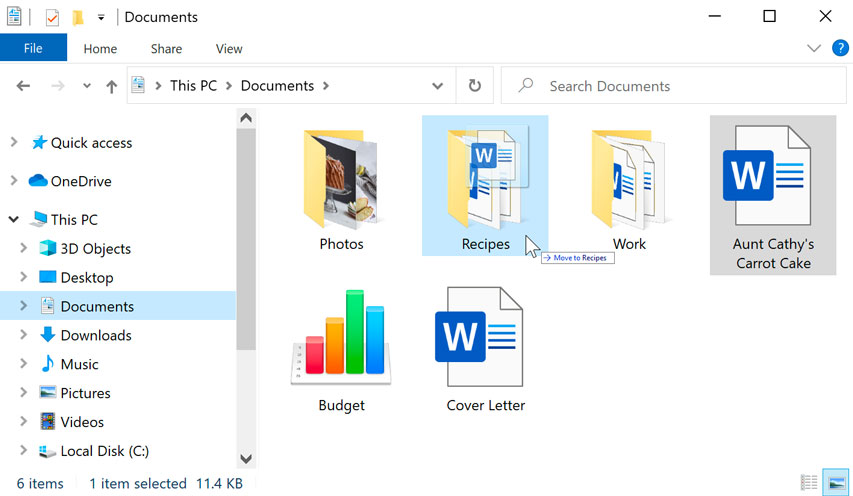
- Release the mouse. The file will announced in the new location. In this instance, we take opened the binder to see the file in its new location.
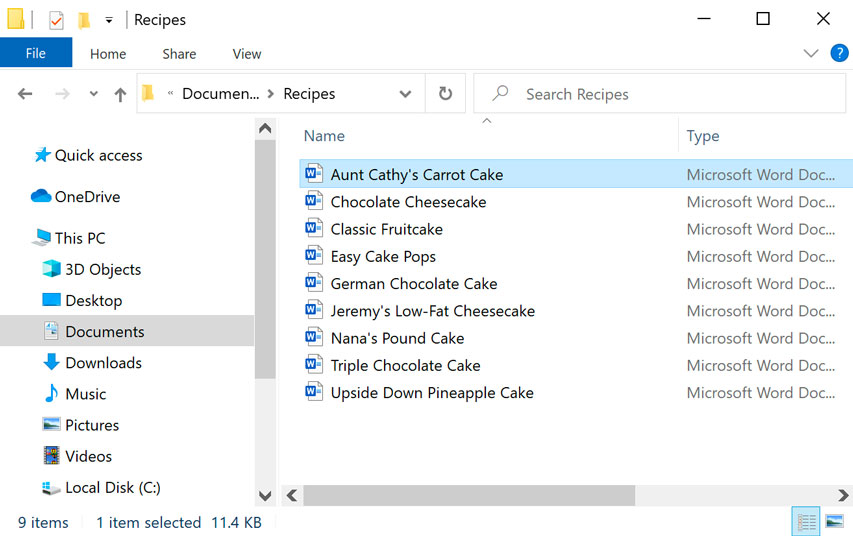
You can utilise this aforementioned technique to move an entire binder. Note that moving a folder will also move all of the files within that folder.
To create a new folder:
- Within File Explorer, locate and select the New folder push button. You can also right-click where you lot want the folder to appear, then select New > Binder.
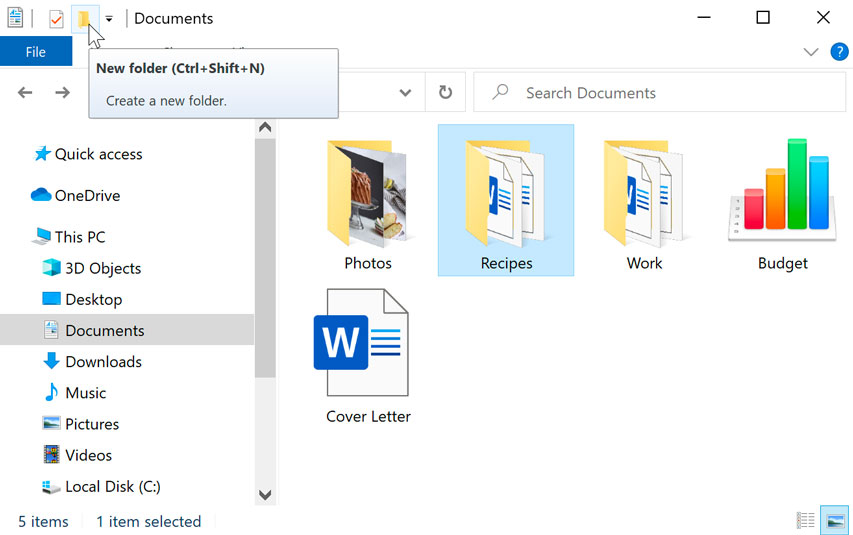
- The new folder will appear. Type the desired name for the binder and press Enter. In our example, we'll call information technology School Documents.
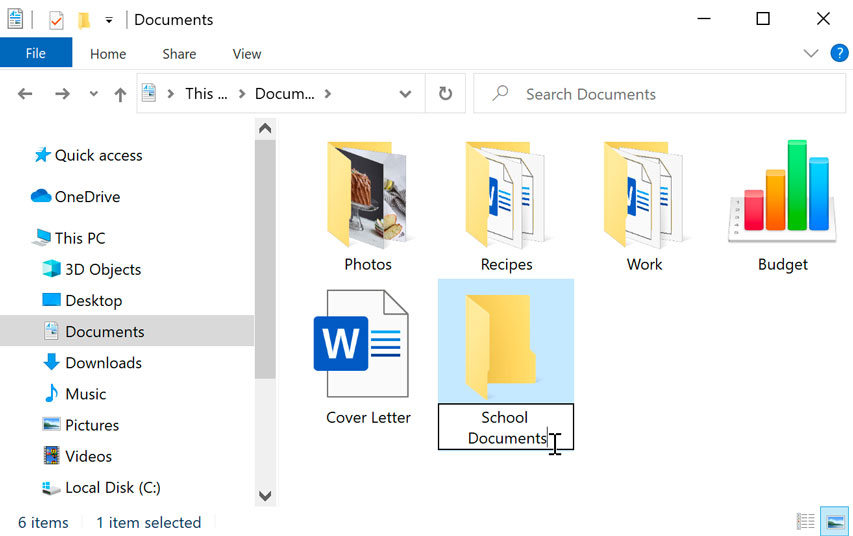
- The new folder will be created. You can now move files into this folder.
To rename a file or binder:
Yous can modify the name of any file or folder. A unique proper noun will make it easier to remember what type of information is saved in the file or folder.
- Click the file or binder, wait about one 2d, and click again. An editable text field will appear.
- Type the desired name on your keyboard and printing Enter. The name will be changed.
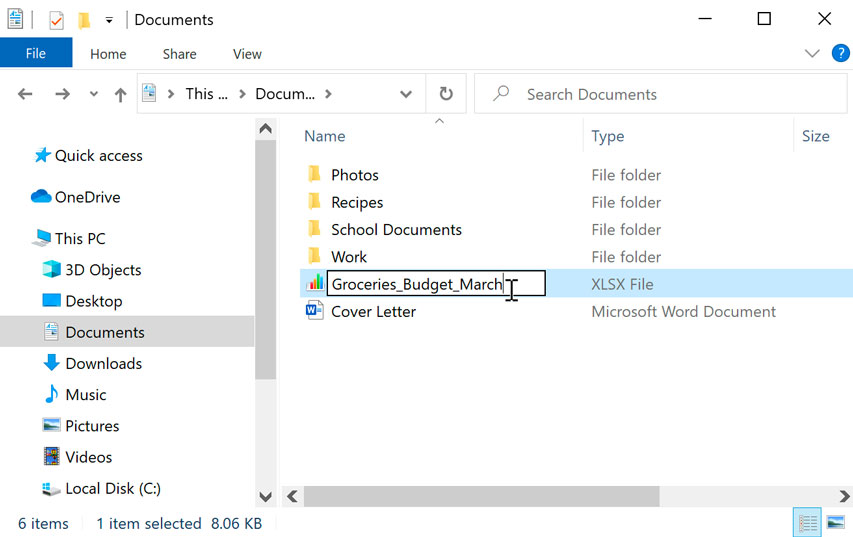
Yous can also right-click the folder and select Rename from the bill of fare that appears.
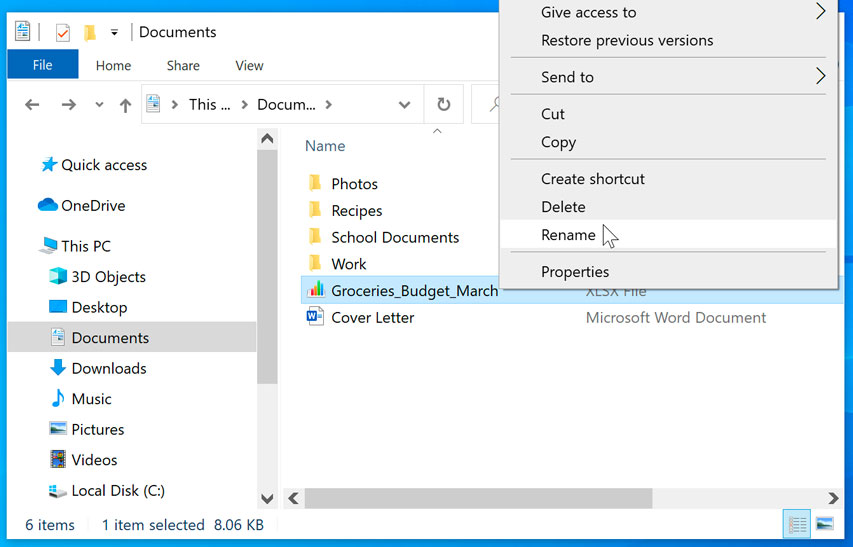
To delete a file or folder:
If you no longer demand to use a file, yous can delete it. When you delete a file, it is moved to the Recycle Bin. If you change your listen, you tin move the file from the Recycle Bin back to its original location. If you're sure y'all want to permanently delete the file, you will need to empty the Recycle Bin.
- Click and drag the file to the Recycle Bin icon on the desktop. You can besides click the file to select it and press the Delete primal on your keyboard.
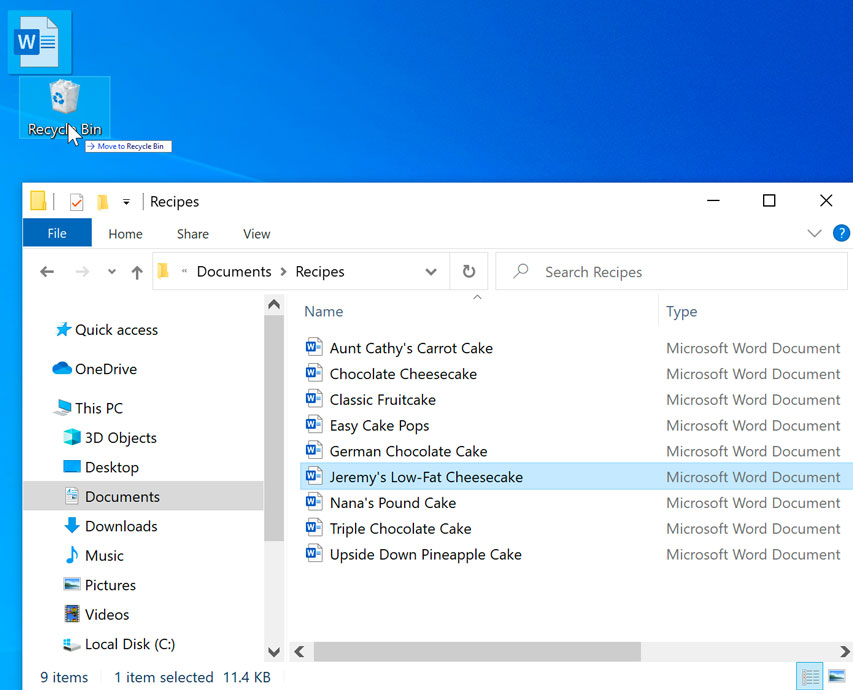
- To permanently delete the file, right-click the Recycle Bin icon and select Empty Recycle Bin. All files in the Recycle Bin volition be permanently deleted.
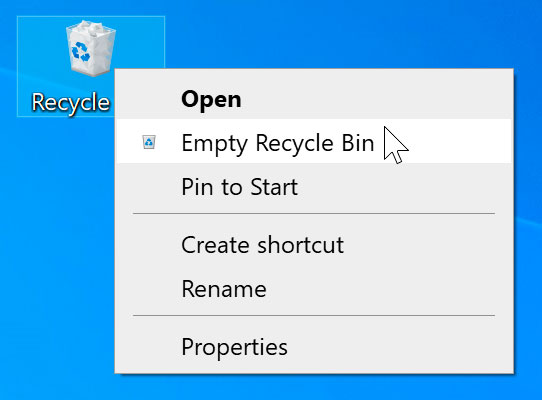
Note that deleting a folder volition also delete all of the files within that folder.
Selecting multiple files
At present that you know the basics, here are a few tips to help you movement your files fifty-fifty faster.
Selecting more than one file
At that place are a few ways to select more one file at a time:
- If you're viewing your files equally icons, you can click and drag the mouse to draw a box effectually the files y'all want to select. When y'all're done, release the mouse; the files will be selected. You can at present motility, copy, or delete all of these files at the same time.
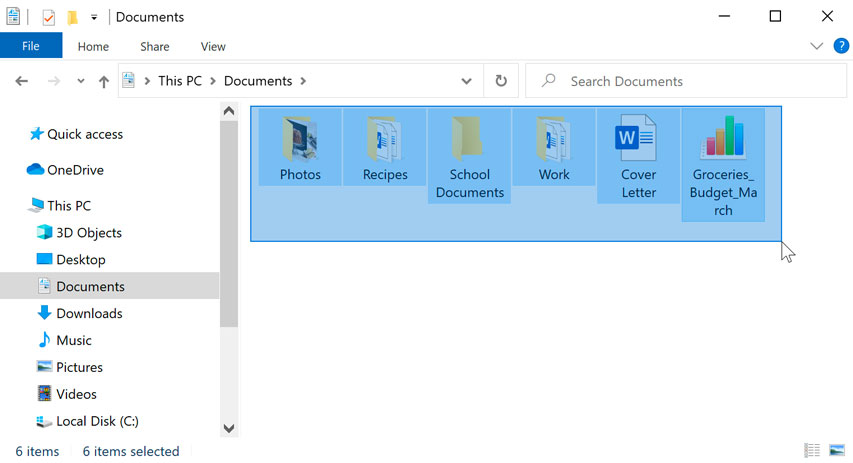
- To select specific files from a folder, press and concord the Control key on your keyboard, so click the files you want to select.
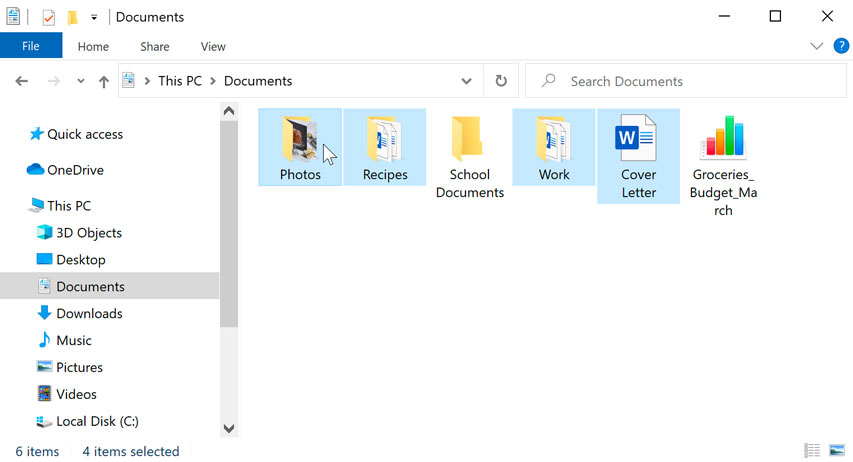
- To select a group of files from a binder, click the first file, press and hold the Shift key on your keyboard, and so click the last file. All of the files betwixt the offset and last ones will be selected.
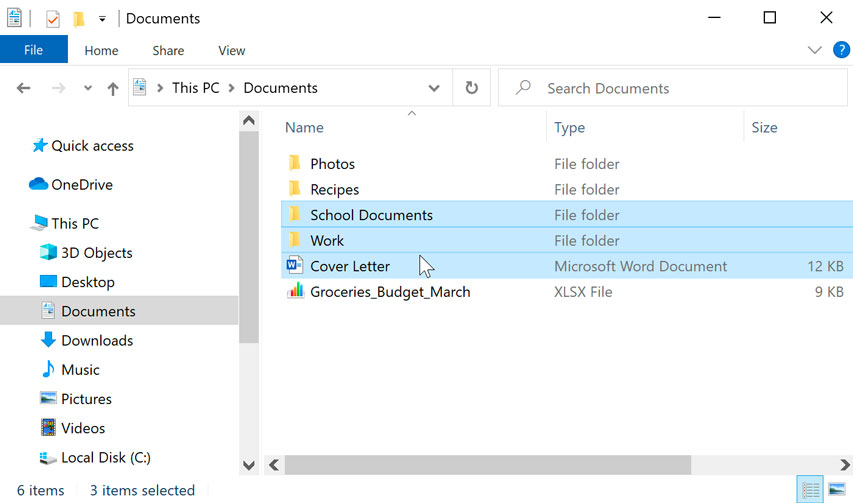
Selecting all files
If you lot desire to select all files in a binder at the same time, open the folder in File Explorer and press Ctrl+A (press and hold the Control key on your keyboard, then press A). All of the files in the folder will be selected.
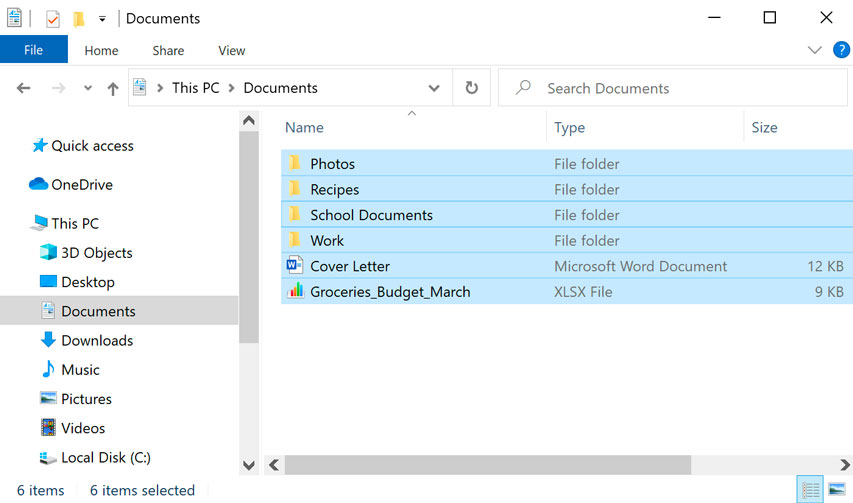
Ctrl+A is an case of a keyboard shortcut. We'll talk more most these in our lesson on Keyboard Shortcuts in Windows.
If working with files and folders feels a trivial catchy right at present, don't worry! Like anything else, working with files and folders is largely a affair of do. You'll start to feel more comfortable as you continue using your computer. In the next lesson, we'll talk about some other important concept: how to find files on your reckoner that y'all can't easily locate.
Shortcuts
If you accept a file or folder yous employ frequently, y'all can save fourth dimension by creating a shortcut on the desktop. Instead of navigating to the file or binder each fourth dimension you lot desire to use it, you tin can simply double-click the shortcut to open it. A shortcut will take a modest arrow in the lower-left corner of the icon.
Note that creating a shortcut does not create a duplicate copy of the folder; it's simply a way to admission the folder more quickly. If you delete a shortcut, it volition not delete the actual folder or the files it contains. Also note that copying a shortcut onto a flash drive will not work; if you desire to bring a file with you, you'll need to navigate to the actual location of the file and copy information technology to the wink drive.
To create a shortcut:
- Locate and right-click the desired folder, and so select Send to Desktop (create shortcut).
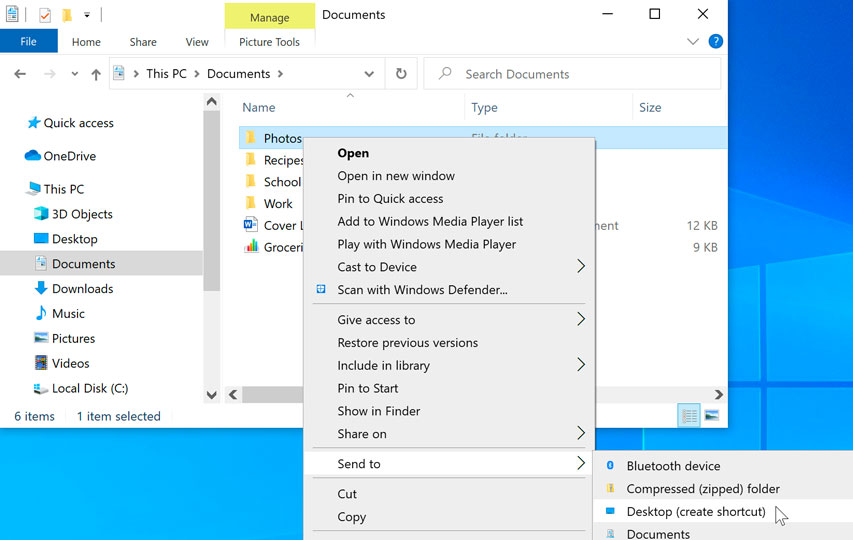
-
A shortcut to the binder volition appear on the desktop. Notice the arrow in the lower-left corner of the icon. You can now double-click the shortcut to open the folder at whatever time.
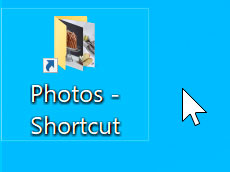
Yous can besides concord the Alt key on your keyboard, then click and elevate the folder to the desktop to create a shortcut.
/en/windowsbasics/finding-files-on-your-computer/content/
Source: https://edu.gcfglobal.org/en/windowsbasics/working-with-files/1/
Posted by: caricoevelf1974.blogspot.com

0 Response to "How To Open My Documents On Windows 10"
Post a Comment